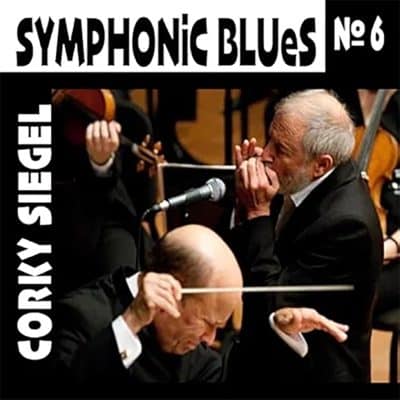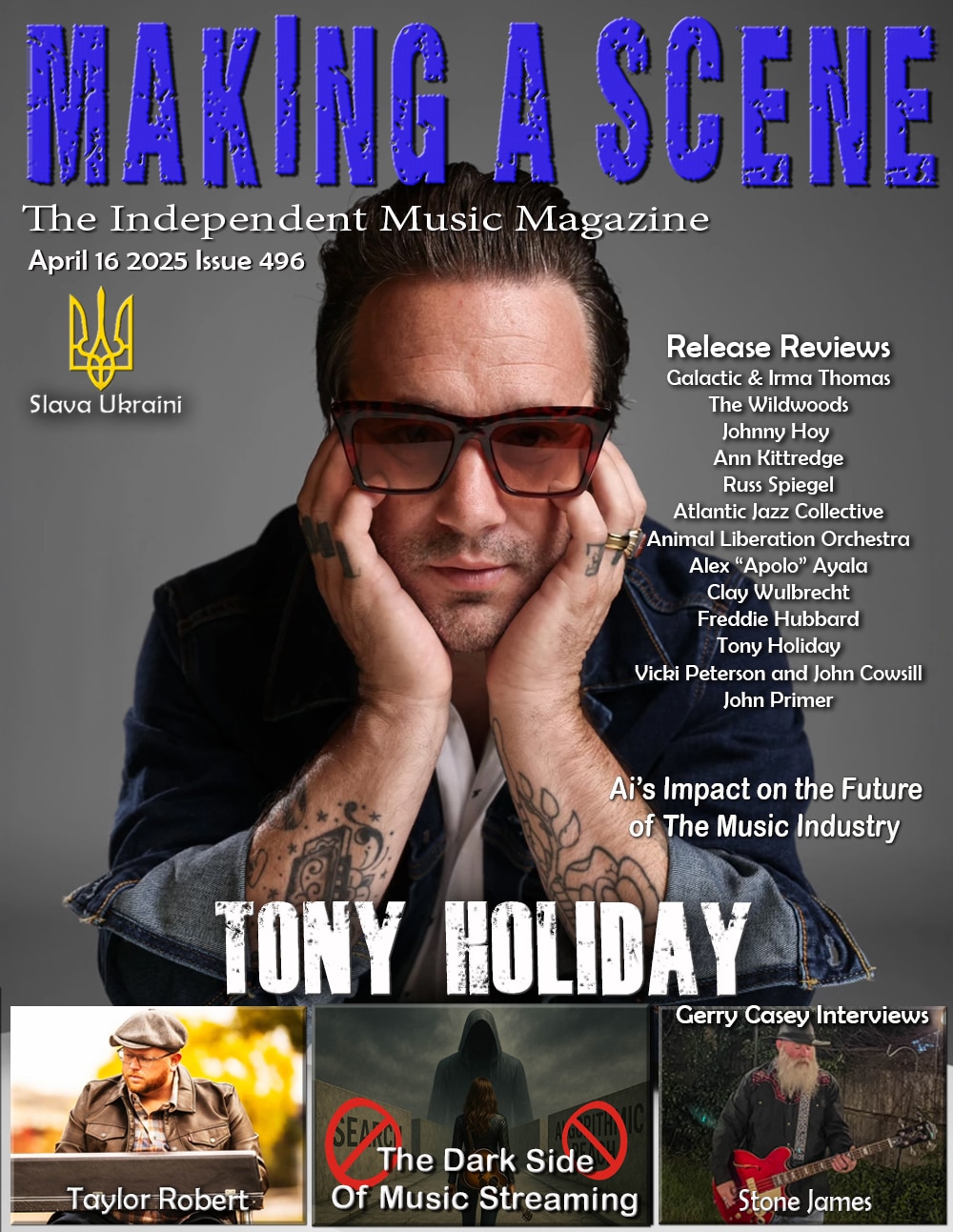Corky Siegel Symphonic Blues No. 6
 Corky Siegel
Corky Siegel
Symphonic Blues No. 6
Dawnserley
This may well be the last symphonic blues for harp master Corky Siegel. Yes, those of us boomers may have forgotten about Siegel somewhat and still relate to his late ‘60s/‘70s duo with guitarist Jim Schwall – Siegel & Schwall. Well, if you haven’ kept up with Corky he’s been working with symphonic orchestras for 59 years, a unique endeavor where his harmonic is the lead instrument in either a chamber blues format or a large orchestral setting like this one, as a collection of players from his Chamber blues ensemble and multiple symphony orchestras. .
Okay, two items before we move on. 1) Much is made of the modern day blues harmonicists such as Charlie Musselwhite, Rick Estrin, Dennis Gruenling and others (you know the names) but relegate all of them to small combos. To these ears the three most versatile players of the instruments are with no disrespect to the above; Gregoire Maret, Lee Oskar, and Siegel as each is so adaptable to so many musical configurations. 2) Warning label: The last 19 minutes of this LP/CD is Siegel telling his story so that leaves just six musical pieces, running to about 38 minutes. You also have the option of ending the music right there and reading his story in the enclosed booklet or keep the CD on for the audio book style.
This is Siegel’s first symphonic blues recording (the others have mostly been with chamber ensembles) since the release of his two major selling benchmark albums on Deutsche Grammophon with Maestro Seji Ozawa (also formerly of the Chicago Symphony) and the San Francisco Symphony back in 1973 and 1977. Symphonic Blues No. 6 was commissioned by Maestro Stephen Gunzenhauser and the Lancaster Symphony Orchestra. It was premiered in 2008, and he toured the world with this work. Celebrating his 80th birthday last year, he wanted to preserve this masterwork and make it available. He gathered first chair masters from the Chicago Symphony, other top orchestras, and his own Chamber blues ensemble. Each musician recorded the work individually and “in the dark,” hearing only themselves, without any reference to any sound or music. This deemed all the parts ‘solo parts” and all the musicians “soloists,” quite a feat to say the least. If you haven’t heard Siegel in this classical context before, you might be stunned at his lyricism on the most simple of instruments.
Symphonic Blues no. 6 has three movements – Filisko’s Dream, Slow Blues, and Allegro. The other three musical offerings are “CODA for Tabla and Harmonica” featuring Kalyan Pathak, “Wrecking Ball Sonata” with his Chamber Blues aggregation, and “Opus 11 for Solo Violin” featuring Dr. Jaime Gorgojo.
This intersection of two musical worlds can best be summed up by an excerpt from his story (you just have to love this!)
A blues player and a classical conductor walk into a bar
As Siegel tells it, “1966…this fellow used to come into Big John’s night after night and stays all night. Apparently he’s a big fan of our music. One night he comes up to me and says, ‘Corky, I’d like your band to jam with my band.’ I’m thinking; Who is this guy and what is his band? He was the renowned Maestro Seiji Ozawa and his band was the Chicago Symphony.”
Delve a bit deeper into the story to find this – “In 1969 America was so divided (sound familiar?) I was only 24, and I was almost booed off the stage at Lincoln Center with the longest and most intense vitriol from an audience that I could imagine. The audience was outraged that hippies, in a blues band, were onstage as guest soloists with their New York Philharmonic. We reached the last measure of William Russo’s Three Pieces for Blues Band and Symphony Orchestra to a thunderous, standing ovation. The Symphony president told me that it was the longest and most intense standing ovation he had ever seen. He compared this to Enrico Caruso’s last appearance…”
If this is Siegel’s last recorded document, he only adds to his incomparable legacy. Listen up and appreciate it.
– Jim Hynes
Buy Us a Cup of Coffee!
Join the movement in supporting Making a Scene, the premier independent resource for both emerging musicians and the dedicated fans who champion them.
We showcase this vibrant community that celebrates the raw talent and creative spirit driving the music industry forward. From insightful articles and in-depth interviews to exclusive content and insider tips, Making a Scene empowers artists to thrive and fans to discover their next favorite sound.
Together, let’s amplify the voices of independent musicians and forge unforgettable connections through the power of music
Make a one-time donation
Make a monthly donation
Make a yearly donation
Buy us a cup of Coffee!
Or enter a custom amount
Your contribution is appreciated.
Your contribution is appreciated.
Your contribution is appreciated.
DonateDonate monthlyDonate yearlyYou can donate directly through Paypal!
Subscribe to Our Newsletter
Discover more from Making A Scene!
Subscribe to get the latest posts sent to your email.














































